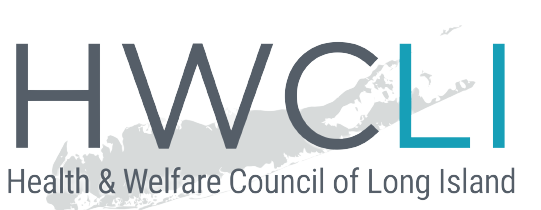Policy & Advocacy
We work with local, state, and federal government partners to advocate for effective policy decisions that will impact our neighbors and hometowns.
Coalitions & Grass Roots Organizing
We bring together nonprofits, business leaders, and lawmakers to discuss solutions to our region’s challenges.
Direct Services
We operate a series of programs that connect Long Islanders with the services they need.
Welcome to the Health & Welfare Council of Long Island
At the Health & Welfare Council of Long Island (HWCLI), our work is to ensure that our region is a welcoming and inclusive place for everyone to live. We can set the standard for what an equitable region looks like. That means safe communities, decent, affordable housing, healthy food, access to care and an opportunity to thrive. In our quest for improvements and systemic change, we face a unique set of obstacles. In fact, the poverty rate today is at its highest since 1959. Given the current assault on the country’s most vulnerable communities, our work is more important than ever.
Our Impact
11350 |
People served in 2023 alone |
76 |
Years Serving Long Island |
200+ |
Partnering Organizations |
Recent News
June 28, 2024
Health and Welfare Council of Long Island hosts 2nd annual nonprofit job fair in Farmingdale
By Victor Ocasio
Read on Newsday
The Health & Welfare Council of Long Island is hosting its second annual nonprofit job fair Thursday night in Farmingdale.
The hiring event aims to connect jobseekers on Long Island with nonprofit organizations in the fields of mental health, disability services, senior services, and counseling.
The free event runs from 5-8 p.m. at Farmingdale State College’s campus center ballroom, located at 2350 Rte. 110 in Farmingdale. Registration for the event is required.
More than 50 local employers are scheduled to attend, including AHRC Nassau, Hope for Youth, and the Family Service League.
For more information or to register, visit the Council's registration page, or call (516) 483-1110.
June 25, 2024
Community Job Fair heads to Farmingdale
Read on TBRNewsMedia
The Health & Welfare Council of Long Island (HWCLI) will host its 2nd Annual Nonprofit Job Fair at the Farmingdale State College Campus Ballroom, 2350 Route 110, Farmingdale on Thursday, June 27 from 5 to 8 p.m.
This event aims to connect job seekers with a variety of job opportunities within nonprofit and governmental organizations located on Long Island. The job fair’s timing is specifically designed to coincide with recent graduates from Long Island universities and colleges, as well as individuals interested in joining organizations that positively impact our neighbors across the island. Job seekers at all career stages will have the opportunity to meet face-to-face with organizations and learn more about exciting career paths.
Over 35 nonprofit and governmental agencies from across Long Island offering job opportunities in a variety of industries: Healthcare, Mental Health, Childcare, Economic Development, Housing and more. Dress for success and bring your resume. Free to attend but registration is required.
To register to attend the job fair as a job-seeker visit https://www.tinyurl.com/HWCLIJOBFAIR24
For more information, call 516-483-1110.
June 18, 2024
Over $22 million available to help New Yorkers stay cool
Posted on June 18th, 2024
By Jon Dowding
Read on News 12
Over $22 million is available now to help New Yorkers stay cool from the comfort of their own homes.
The Home Energy Assistance Program provides help to those who need financial assistance for cooling and heating in their homes.
Health & Welfare Council of LI president and CEO Vanessa Baird-Streeter says the resource can provide major assistance to families across Long Island during the summer.
"The opportunity to be able to get up to $800 for an air conditioner or a fan and then up to (...) $1,000 for a sleeve, that is really going to provide some relief for residents and our community members,” she said.
Most people who qualify for HEAP mainly seek assistance during the winter months and often forget the assistance is available during the summer months as well.
"Residents who are eligible for HEAP, have the opportunity to be eligible for cooling assistance as well,” said Baird-Streeter. “And we really don't think about that."
Use this link to find the HEAP assistance contacts for Nassau and Suffolk counties.
Learn more about the HEAP cooling assistance program here.
Events
Join us in creating a future for Long Island in which everyone has an equal opportunity to prosper and thrive.
Join Our Network
Subscribe to Our Newsletter
Copyright ©2024 HWCLI. All Rights Reserved. Designed by FBC

 06:00 pm - 10:00 pm
06:00 pm - 10:00 pm The Piermont, Babylon, NY, 11702
The Piermont, Babylon, NY, 11702























